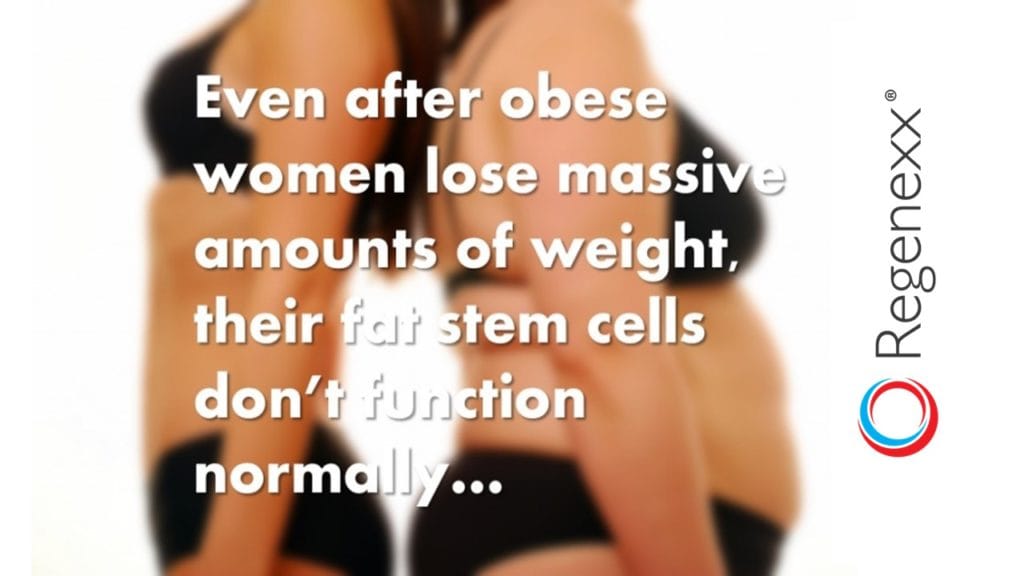Heavier Patients Permanently Damage Fat Stem Cells
I promised that I would delve deeper into the concept of adipose versus bone marrow stem cells. One of the concepts often brought up in support of using fat as a stem cell source is that it’s a plentiful resource in America. However, does being heavy make for more and better stem cells or does being heavy actually hurt stem cell quality? Regrettably it seems like the research is supporting that the later is more frequently the case – heavy people have poor quality fat stem cells.
Stem cells are everywhere in our bodies – in our skin, bones, muscles, organs, and fat. There are a good number of stem cells in fat which can be concentrated by breaking down the tissue in a simple procedure that our FDA regrettably categorizes as the creation of a prescription drug. Despite that regulatory classification, there are no shortage of doctors and companies using fat stem cells to treat whatever ails you. Websites advertising the treatment of everything from Arthritis and ALS to MS and impotence using fat stem cells can be found all over the Internet. However, what if obesity itself actually harmed the quality of the stem cells? The burgeoning fat stem cell industry would have some serious issues to solve.
The concept that the physical attributes of the patient may impact fat stem cells isn’t new. For example, prior studies have shown that fat stem cells isolated from older patients weren’t as capable to doing things like creating new blood supply, a critical feat for tissue repair. In addition, other research has revealed that women over 40 have about half the number of fat stem cells as younger patients. A recent study suggests that not only age, but being heavy negatively impacts fat stem cell health.
The study looked at the most common type of fat stem cell treatment being used – stromal vascular fraction (SVF). This is digested and centrifuged fat that isolates a mix of cells, the vast minority of which are stem cells. In the research, the investigators looked at SVF from thinner patients (thinner than the average person in the U.S.), from very obese patients, and from formerly obese patients who had undergone successful bariatric surgery. Basically, the stem cells from obese women and formerly obese women excreted much more of a bad inflammatory chemical (IL-6) than those from thinner patients. Why is this an issue? Fat stem cells are frequently used to treat diseases where inflammation is out of control, so if they inadvertently secrete inflammatory chemicals, that could make the inflammatory disease worse. This makes sense, as obese men and women often suffer from diseases of chronic inflammation, so it’s no surprise that their stem cells may play a role in stoking that inflammatory fire.
The upshot? Fat stem cells from older patients tend to perform more poorly than those taken from younger patients. In older women there are also far fewer of them. Now this new research suggests that in obese women, they may function differently by releasing excessive amounts of pro-inflammatory chemicals. Perhaps more concerning is the fact that even after women have lost massive amounts of weight (almost half their body weight in this study), their stem cells still have this problem!

NOTE: This blog post provides general information to help the reader better understand regenerative medicine, musculoskeletal health, and related subjects. All content provided in this blog, website, or any linked materials, including text, graphics, images, patient profiles, outcomes, and information, are not intended and should not be considered or used as a substitute for medical advice, diagnosis, or treatment. Please always consult with a professional and certified healthcare provider to discuss if a treatment is right for you.

